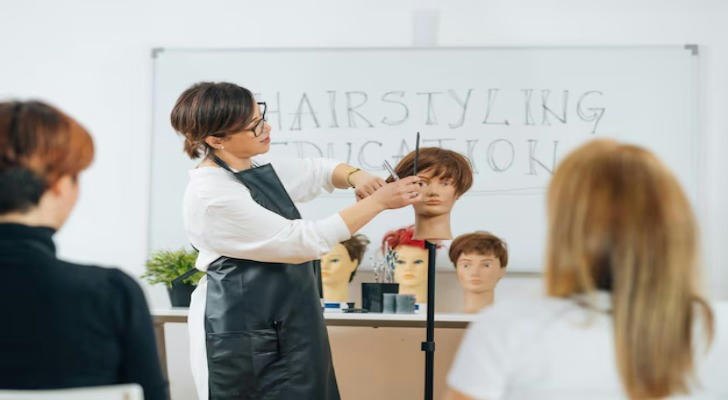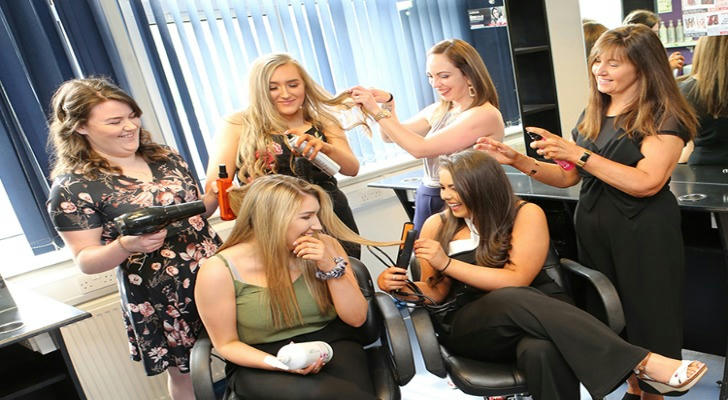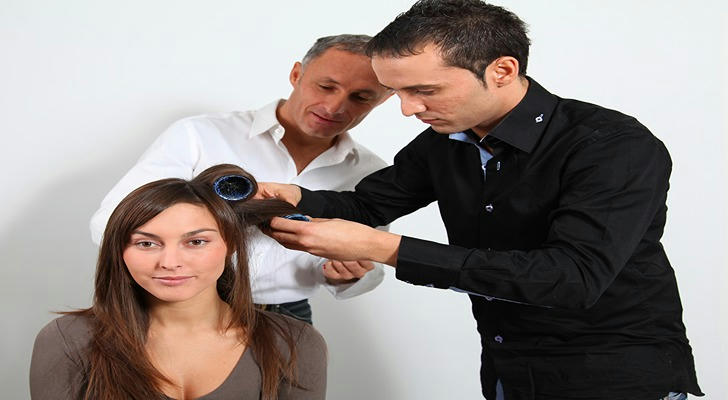Entering the Hairdressing Classroom: Course Content and Skill Training Revealed
Today, as image management is increasingly valued, the hairdressing industry is no longer just a traditional craft, but also a comprehensive profession that integrates aesthetics, communication and technology. As the market demand for professional hairdressing talents continues to rise, more and more aspiring people are beginning to enter the hairdressing classroom to systematically learn core skills such as hair cutting, hair dyeing, and styling.
So, what does a formal hairdressing course teach? How is skill training arranged? This article will fully reveal the course arrangement and training focus in the hairdressing classroom, helping friends who are interested in joining this industry to gain an in-depth understanding of the skills and growth paths they need to master.

Ⅰ. Getting started in the hairdressing classroom: a friendly setting from scratch
Many people worry that they have no foundation and cannot adapt to professional hairdressing training. But in fact, most courses start from scratch, and the course design is close to reality and step-by-step.
1.1 Teaching scenes simulate real work
Hairdressing classrooms are usually equipped with:
Professional hairdressing chairs, shampoo beds
Practice molds that simulate customers (practice dummies)
Common tools such as hair dryers, electric clippers, curling irons, etc.
Simulate the reception and service process area of the salon
These arrangements make the learning environment in line with the real salon, and students gradually become familiar with the working atmosphere and rhythm during training.
1.2 Teaching content from shallow to deep
The course usually starts with the basic knowledge of hair, such as:
Hair quality types and care methods
Tool names and usage methods
Scalp structure and basic hygiene knowledge
After that, it enters the skill training of hair cutting, perming, dyeing, styling, etc. to ensure that every student has a solid foundation.
Ⅱ. Overview of course content: both theory and practice
Formal hairdressing courses are divided into multiple learning modules, each module is intensively trained for different skill points. The following are several common teaching stages:
2.1 Basics of haircutting
Learning content includes:
Knowledge of haircutting tools and holding skills
Different haircutting techniques (straight cutting, layered cutting, point cutting, etc.)
Structural understanding of basic hairstyles for men and women
Matching design of hairstyles with face and head shapes
During the training process, students need to repeatedly operate the die head to master the control of angles, feel and rhythm.

2.2 Washing and scalp care
This part emphasizes hygiene and comfortable experience, including:
Washing process, scalp massage techniques
Product use order and applicable hair quality
Hygiene and disinfection specifications
Although it seems simple, this is the first step to build customer trust and directly affects the return rate.
2.3 Hair Dyeing Techniques
The hair dyeing module covers:
Basics of color theory: matching of cool colors, warm colors, and neutral colors
Hair dye mixing ratio and coloring order
How to bleach, highlight, and highlight
Different hair types react differently to colors
Students will improve their accuracy and visual judgment through repeated mixing and coloring training.
2.4 Perm and styling
This part of the training requires strong hands-on skills, including:
Various perm techniques (cold perm, hot perm, etc.)
Curl control and softening time adjustment
Blow-drying and straightening techniques
- How to use styling products (such as spray and wax)
The focus is on mastering the temperature, time, and tool combination required for different styling.
Ⅲ. Skill training in class: from die head to real person operation
3.1 Lay the foundation from die head practice
At the beginning of the course, all operations are performed on the practice die head:
The die head can be used to repeatedly practice hair cutting, dyeing, and styling
Mistakes can be corrected, and confidence is increased without pressure
The instructor will explain and demonstrate the details one by one
Die head practice is the basis, but it is very critical, which helps to familiarize with gestures, control and visual judgment.
3.2 Real person practice: Establish communication and practical experience
When students have mastered certain skills, they will start to operate on volunteers or designated models:
Real interaction, training communication skills and service processes
Contact with different hair qualities and head shapes to improve adaptability
Learn how to establish a trusting relationship with "customers"
This is an important step before entering the workplace. Many students gradually build professional confidence at this stage

Ⅳ. Student Case: Mike's Career Change
Mike was originally an office clerk. Because of his strong interest in hairstyling, he signed up for a local hairdressing course. At first, he was not even familiar with how to hold the scissors, but under the patient guidance of the teacher and repeated practice, he gradually mastered the skills of cutting and dyeing hair.
He recalled: "When I first started practicing with the die head, I cut it badly more than once, but every failure was an opportunity to improve. Later, when I dyed real people's hair for the first time, the sense of achievement made me feel unprecedented satisfaction."
After graduation, Mike entered a community salon and used his spare time to provide door-to-door services to neighbors. Not only did his income gradually stabilize, but more importantly, he found a job that he really liked and was good at.
Ⅴ. Beyond the course: Extension and improvement of hairdressing learning
5.1 Industry exchange and observation
Many courses will arrange for students to:
Visit well-known hair salons
Watch public demonstrations by senior hairstylists
Participate in group work design competitions
Through these activities, students can not only observe advanced skills, but also broaden their horizons and stimulate creativity.
5.2 Build a portfolio
Starting from the middle of the semester, students are usually encouraged to take photos of their completed hairstyles and build a personal portfolio. This is not only a way to summarize what they have learned, but also an important tool for future job hunting or self-employment.
VI. Conclusion
Walking into a hairdressing classroom is not just about learning a few haircutting techniques, but also about entering a professional world that integrates aesthetics, technology and interpersonal communication. From basic knowledge to practical training, from die head practice to interaction with real people, each link lays a solid foundation for future careers.
For everyone who loves hairdressing and desires to express themselves, this learning journey not only shapes professional abilities, but also broadens the possibilities of life. Here, you not only learn how to shape the appearance of others, but also gradually carve a clearer self.
